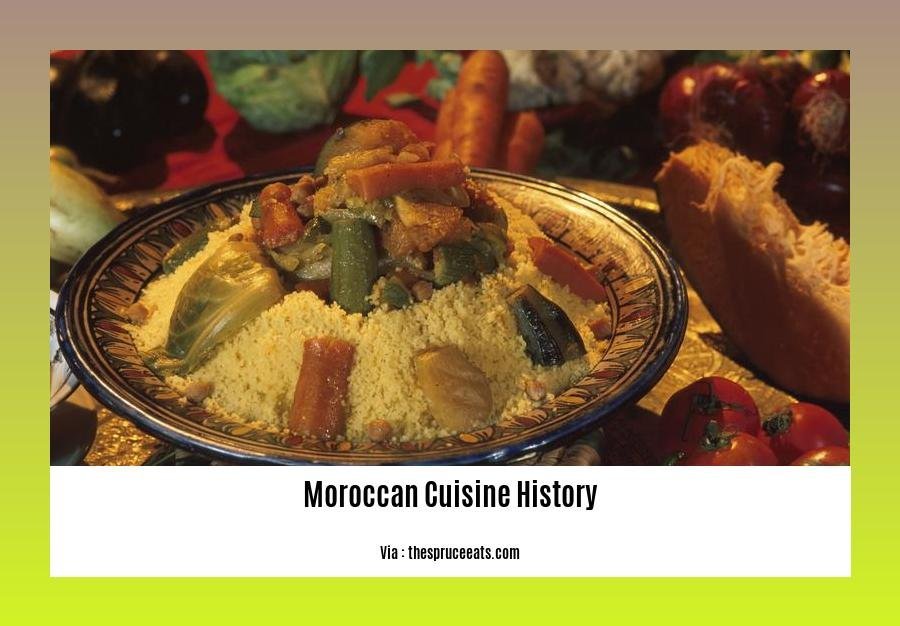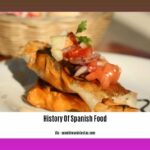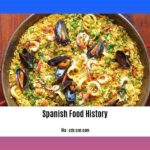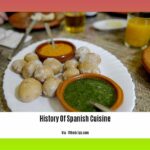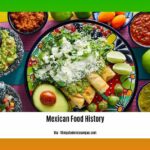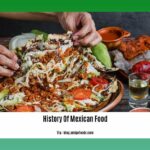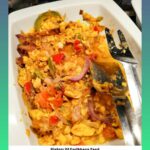Embark on a culinary journey through time as we unveil the rich history of Moroccan cuisine in its splendor. From the bustling souks of Marrakech to the tranquil courtyards of Fes, Morocco’s culinary heritage is a tapestry woven with Berber, Arab, and Mediterranean influences. A Culinary Journey Through Time: Unveiling the Rich History of Moroccan Cuisine awaits you!
Key Takeaways:
Moroccan cuisine is a fusion of various cultures and nations, including Berber, Andalusi, Mediterranean, Arab, French, and Spanish influences.
Dishes like tagine and couscous, introduced by the Berbers, are staples of Moroccan cuisine.
Colonizers and immigrants have left a mark on Moroccan food with introductions like barbeque from the Ottomans and café culture from the French.
Fresh, seasonal produce like spices, vegetables, fruits, and meat are commonly used.
Moroccan dishes often feature fragrant spices and herbs like cumin, paprika, saffron, and mint.
Traditional dishes include tagine, couscous, pastilla, and harira soup, known for their unique flavors and cooking methods.
Moroccan cuisine involves slow-cooking techniques like stewing and braising that enhance dish flavors and tenderness.
Salads, appetizers, and desserts such as Moroccan salads, briouats, and chebakia are also integral to the cuisine.
Communal dining is essential, with meals shared among family and friends to foster togetherness and hospitality.
You can enjoy Moroccan cuisine at home, in local restaurants, or through cooking classes and food tours.
Moroccan cuisine is constantly evolving, with chefs and home cooks experimenting with new takes while preserving authenticity.
Moroccan Cuisine History: A Culinary Journey Through Time
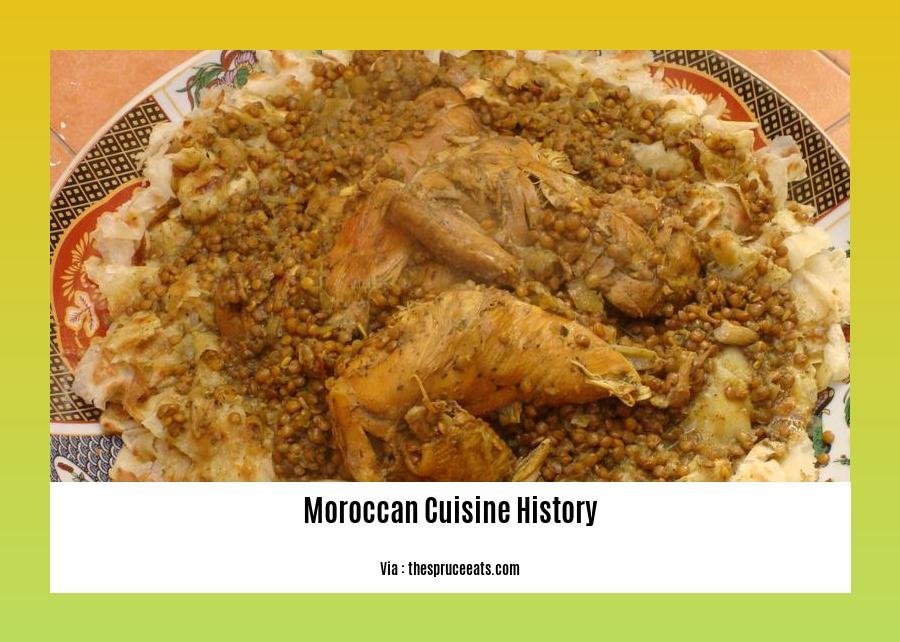
A symphony of flavors, a tapestry of cultures, and a testament to time’s transformative power all come together in the rich history of Moroccan cuisine. Join me on a culinary expedition as we explore the enchanting world of Moroccan food.
Berber Roots: The Foundation of Moroccan Cuisine
The story begins centuries ago, when the Berbers, the indigenous people of North Africa, laid the groundwork for Morocco’s culinary heritage. Their nomadic lifestyle brought them in contact with a vast array of ingredients, spices, and cooking techniques. From the rustic tagine to the versatile couscous, the Berbers left an indelible mark on Moroccan gastronomy.
A Crossroads of Civilizations: Influences from Afar
As time marched on, Morocco’s strategic location made it a crossroads of civilizations. Andalusians, Arabs, and Mediterranean traders brought their unique culinary traditions to this vibrant land. The result was a fascinating fusion of flavors, techniques, and culinary influences that shaped the unique identity of Moroccan cuisine.
The Ottoman Empire: Unveiling New Delights
The arrival of the Ottomans introduced a host of new culinary wonders. The succulent flavors of grilled meats, the fragrant aromas of barbeque, and the delectable sweets like chebakia enriched the Moroccan culinary repertoire.
French and Spanish Influences: A Taste of Refinement
Colonialism played a role in shaping the evolution of Moroccan cooking as well. The French introduced the café culture, with its delectable pastries and aromatic coffee. The Spanish, meanwhile, left behind a legacy of seafood dishes and paella, which were adapted to create Moroccan culinary masterpieces.
Moroccan Cuisine Today: A Reflection of its History
Today, Moroccan cuisine stands as a testament to its rich and diverse history. It’s a cuisine that celebrates fresh, seasonal ingredients, an explosion of spices, and the art of slow cooking. From the vibrant street food markets to the lavish feasts enjoyed in homes, Moroccan food continues to captivate and delight food enthusiasts around the world.
Embark on a Culinary Adventure
Whether you’re exploring the bustling souks of Marrakech, enjoying the serene beauty of Essaouira, or simply cooking up a Moroccan feast in your own kitchen, the history of Moroccan cuisine is an adventure waiting to be savored. Let the flavors transport you through time and awaken your taste buds to the wonders of this culinary paradise.
Moroccan Cuisine Timeline:
| Period | Influence | Notable Dishes |
|---|---|---|
| Berber Origins | Indigenous People | Tagine, Couscous |
| Andalusian, Arab | Islamic Conquest | Pastilla, Harira |
| Ottoman Empire | Turkish Rule | Grilled Meats, Barbeque |
| French Influence | Colonial Period | Café Culture, Pastries |
| Spanish Influence | Colonial Period | Seafood Dishes, Paella |
| Modern Moroccan | Contemporary | Fusion Dishes, Street Food |
Unravel the sweet journey of wedding cakes down the ages! Discover the cultural influences and symbolic meanings that shaped these culinary masterpieces, which set the tone for the grandest of celebrations. history of wedding cakes
Embark on a taste-bud tingling exploration of Mexican food history! From ancient Mayan feasts to the vibrant street food of today, uncover the captivating flavors and stories that have shaped this beloved cuisine. mexican food history
Savory tales await you in the history of ranch dressing! Dive into the fascinating origins of this creamy, tangy condiment, beloved for its unique blend of herbs and spices. ranch dressing history
Moroccan cuisine is known for its use of aromatic spices, fresh ingredients, and vibrant colors.
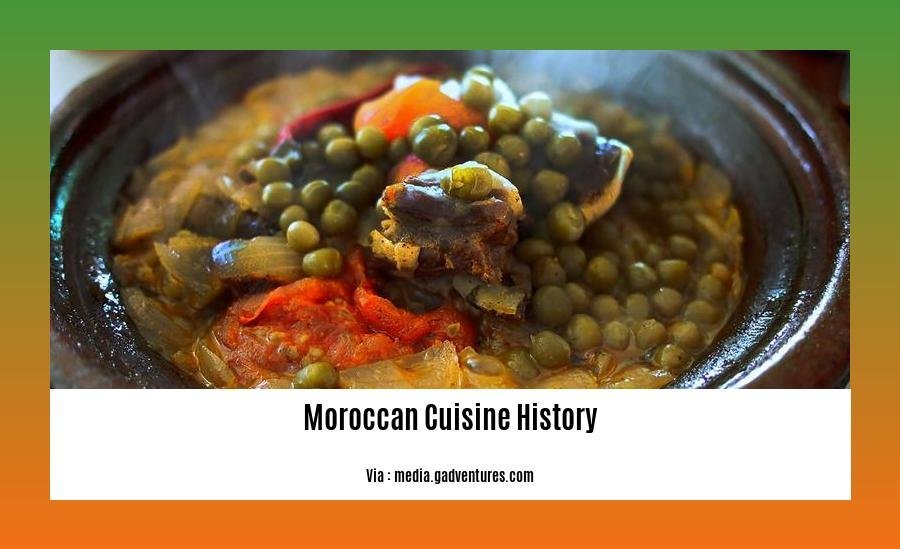
Imagine yourself transported to the bustling souks of Marrakech, where the air is alive with the tantalizing aromas of Moroccan cuisine. This rich and diverse culinary tradition, deeply rooted in history and influenced by a tapestry of cultures, has earned Morocco its reputation as a foodie’s paradise.
A Symphony of Spices
Spices are the heart and soul of Moroccan cuisine, adding a symphony of flavors that dance on your palate. Cumin, coriander, ginger, paprika, and saffron are just a few of the vibrant spices that lend their magic to traditional Moroccan dishes.
A Rainbow of Fresh Ingredients
Moroccan cuisine is a testament to the country’s abundant natural resources. Fresh fruits, vegetables, and herbs are the stars of many dishes, adding a pop of color and a burst of flavor. From the sweet and juicy oranges of Essaouira to the plump, sun-ripened tomatoes of the Souss Valley, Morocco’s diverse climate provides a bounty of fresh ingredients that inspire culinary creativity.
A Feast for the Eyes
Moroccan cuisine is not just a delight for the taste buds but also a feast for the eyes. Vibrant colors, meticulously arranged platters, and intricate decorative elements turn every meal into a visual masterpiece. From the golden-brown tagines to the colorful salads, Moroccan cuisine is a feast for all the senses.
Key Takeaways:
- Moroccan cuisine is celebrated for its vibrant blend of spices, fresh ingredients, and captivating presentation.
- Centuries of cultural influences, including Berber, Arab, and Mediterranean, have shaped the unique flavors and techniques of Moroccan cuisine.
- Spices such as cumin, coriander, ginger, paprika, and saffron add warmth, depth, and complexity to Moroccan dishes.
- Fresh fruits, vegetables, and herbs lend a pop of color, flavor, and nutritional value to Moroccan cuisine.
- The vibrant presentation of Moroccan cuisine, with its intricate decorative elements and colorful platters, elevates dining into a feast for the eyes.
References:
– Moroccan Cuisine – Wikipedia
– Moroccan Food: A Culinary Journey Through Morocco
Tagines, couscous, and pastillas are some of the most popular and iconic Moroccan dishes.
When it comes to Moroccan cuisine, a trio of delicacies immediately springs to mind: tagines, couscous, and pastillas. These culinary wonders, deeply rooted in Moroccan history and culture, have become symbolic of the country’s rich and diverse gastronomy.
Tagines:
These slow-cooked stews take their name from the earthenware pot in which they’re prepared. A tagine is not merely a dish but an experience, an aromatic journey through Morocco’s vibrant spice palette. From the tender lamb melting in your mouth to the velvety embrace of vegetables, each bite is a celebration of Morocco’s culinary heritage.
Couscous:
Hailing from the kitchens of Berber nomads, couscous is a symbol of Moroccan hospitality and conviviality. Semolina grains, steamed to fluffy perfection, serve as a canvas for an array of flavorful accompaniments, from savory stews to sweet caramelized vegetables. A feast for both the eyes and the taste buds, couscous transcends its humble origins, becoming a centerpiece of Moroccan celebrations.
Pastillas:
Fit for royalty, the majestic pastilla is a culinary masterpiece, a delicate filo pastry enveloping a symphony of flavors. From sweet to savory, the fillings vary, showcasing Morocco’s culinary diversity. Almonds, pigeon meat, and an aromatic blend of spices dance harmoniously within this flaky pastry, creating a dish fit for a sultan’s table.
In Morocco, these dishes are not just meals; they are storytelling vessels, each bite a narrative of history, culture, and tradition. Whether it’s the comforting warmth of a tagine on a chilly evening, the exuberant celebration surrounding a couscous feast, or the regal elegance of a pastilla during a festive occasion, these culinary treasures encapsulate the very essence of Morocco.
Key Takeaways:
- Tagines, couscous, and pastillas represent the pinnacle of Moroccan cuisine, each dish embodying unique culinary traditions.
- Tagines, with their slow-cooked stews, showcase Morocco’s mastery of spices and flavors.
- Couscous, a symbol of Berber hospitality, is a versatile dish enjoyed on both celebratory and everyday occasions.
- Pastillas, a culinary masterpiece, elevate Moroccan cuisine to regal heights with their intricate filo pastry and diverse fillings.
- These dishes are not just meals; they are storytelling vessels, capturing the essence of Morocco’s history, culture, and tradition.
Sources:
– Moroccan Food: 34 Iconic and Traditional Dishes to Discover
– Moroccan Cuisine – Wikipedia
Moroccan Cuisine has Gained International Recognition and is Enjoyed by People All Over the World.
Imagine a tantalizing journey through the vibrant tapestry of Moroccan cuisine, where flavors dance in harmony, creating an unforgettable symphony of taste. Like a culinary treasure chest, Morocco’s diverse dishes offer a glimpse into its rich history, a testament to the skillful blending of Berber, Arab, and Mediterranean influences.
Key Takeaways:
Moroccan cuisine’s unique identity stems from the fusion of North African, Andalusian, Middle Eastern, and French culinary influences.
Couscous, tagine, and pastilla are just a few of the iconic dishes that have captivated taste buds worldwide.
The vibrant spices and aromatic herbs that define Moroccan cuisine create a symphony of flavors that lingers on the palate.
Moroccan cuisine’s versatility extends from hearty tagines to delicate pastries, showcasing the country’s diverse culinary landscape.
The communal aspect of Moroccan dining fosters a sense of togetherness and warmth, enhancing the culinary experience.
Over the centuries, Moroccan cuisine has gained international recognition and is enjoyed by people all over the world. Its unique blend of flavors and textures has captivated the hearts of food enthusiasts, inspiring a global appreciation for its culinary artistry. From the bustling streets of Marrakech to the serene shores of Essaouira, Moroccan cuisine has become a symbol of cultural exchange and gastronomic delight.
One of the most striking features of Moroccan cuisine is its liberal use of spices and herbs. From the earthy notes of cumin to the fragrant aroma of cinnamon, each ingredient plays a vital role in creating a harmonious balance of flavors. Spices like saffron, ginger, and paprika add depth and warmth to dishes, while fresh herbs like mint and coriander provide a refreshing contrast.
The art of cooking in Morocco is a testament to the country’s rich culinary heritage. Traditional dishes are often prepared with patience and precision, allowing the flavors to meld and develop. Tagines, the iconic slow-cooked stews, simmer for hours, infusing the meat and vegetables with a symphony of spices and aromatic herbs. Couscous, the national dish of Morocco, is a versatile grain that can be paired with a variety of meats, vegetables, and sauces, creating a hearty and satisfying meal.
Moroccan cuisine is not just about savory dishes; it also boasts a rich tradition of pastries and sweets. From the flaky filo pastry of pastilla to the melt-in-your-mouth chebakia cookies, Moroccan desserts are a testament to the country’s sweet tooth. Honey, almonds, and orange blossom water are commonly used ingredients, adding a touch of sweetness and elegance to these delectable treats.
The communal aspect of Moroccan dining is an integral part of the culinary experience. Meals are often shared among family and friends, fostering a sense of togetherness and warmth. The table is laden with a variety of dishes, allowing diners to sample a diverse array of flavors and textures.
In recent years, Moroccan cuisine has gained international recognition and is enjoyed by people all over the world. Its unique blend of flavors, textures, and aromas has captured the attention of food enthusiasts, chefs, and restaurateurs alike. From Michelin-starred restaurants to humble neighborhood eateries, Moroccan cuisine is making its mark on the global culinary landscape.
Sources:
FAQ
Q1: What are the key influences that have shaped Moroccan cuisine?
A1: Moroccan cuisine is a fusion of Berber, Arab, Mediterranean, and Andalusi influences, with additional impacts from French and Spanish colonizers.
Q2: What are some staple dishes of Moroccan cuisine?
A2: Moroccan cuisine features dishes like tagine, couscous, and pastilla, all of which are rooted in Berber traditions and have become emblematic of the country’s culinary heritage.
Q3: How have foreign colonizers and immigrants influenced Moroccan cuisine?
A3: Colonizers and immigrants have left their mark on Moroccan cuisine, with the introduction of techniques like barbeque by the Ottomans and the establishment of the café culture by the French.
Q4: What are the commonly used ingredients in Moroccan cuisine?
A4: Moroccan cuisine emphasizes fresh and seasonal ingredients, including spices, vegetables, fruits, and meat. Common spices include cumin, paprika, saffron, and mint, while dishes often incorporate local produce like olives, figs, and dates.
Q5: What are some unique cooking techniques associated with Moroccan cuisine?
A5: Moroccan cuisine employs slow-cooking methods like stewing and braising to enhance the flavors and tenderness of dishes. Additionally, tagines, a type of earthenware cooking pot, are commonly used to create flavorful stews and other dishes.
